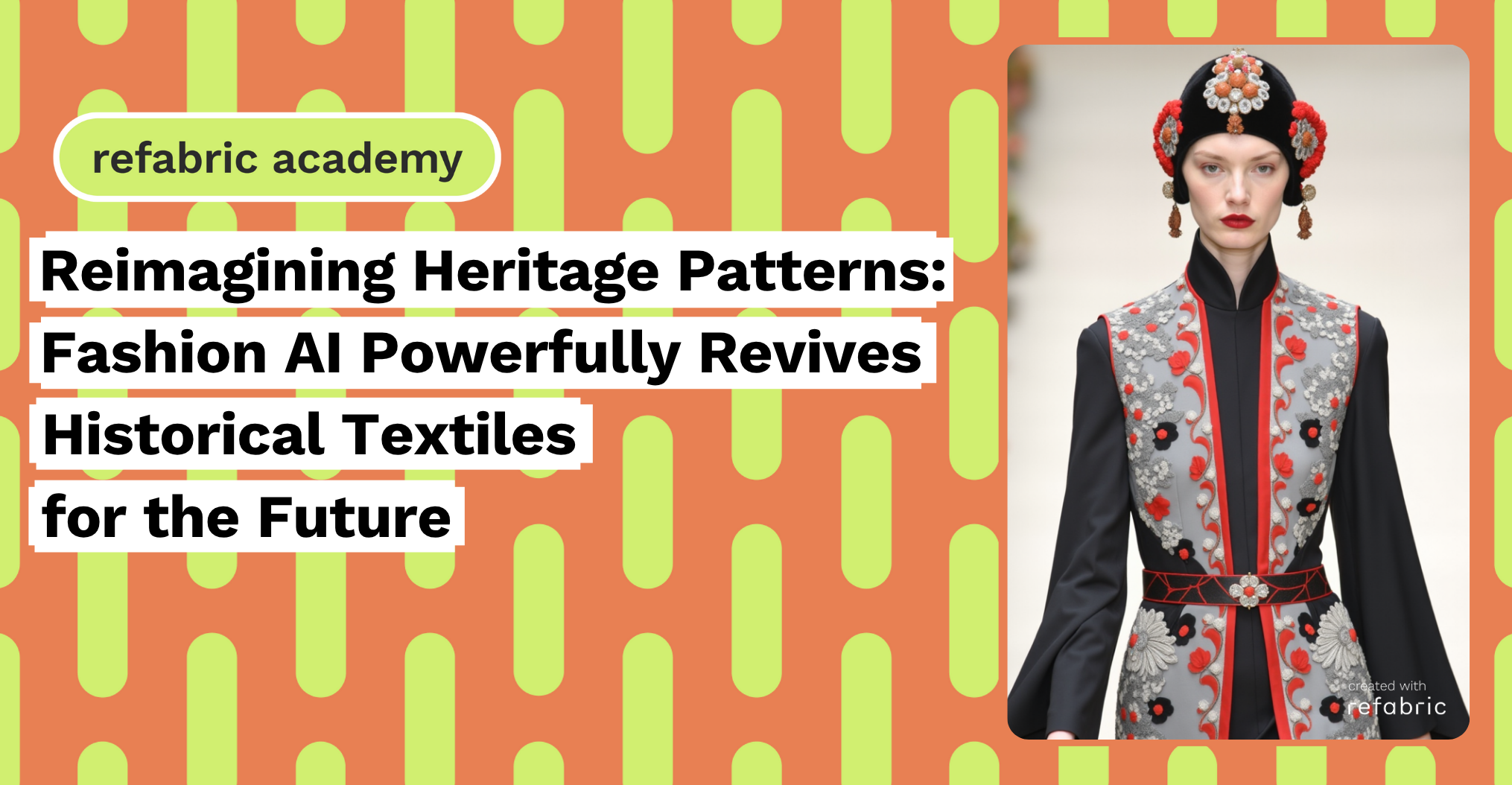Fashion AI is opening a new frontier in design, where the rich legacy of historical textiles meets the cutting-edge possibilities of technology. No longer confined to museum archives or artisan workshops, traditional patterns are being revitalized, reinterpreted, and globally shared through the power of artificial intelligence. This fusion of craft and code is ushering in a cultural renaissance, one where heritage finds its place in the future of fashion.
How Fashion AI is Transforming the Design Process
At its core, fashion AI is reshaping how designers interact with traditional patterns. AI-driven platforms like Refabric’s design suite allow users to digitize motifs from various cultures whether it’s the symmetrical beauty of Islamic geometry, the vibrant colors of African kente cloth, or the delicate florals of East Asian brocade. Once digitized, these patterns can be analyzed, modified, and regenerated into countless variations without losing their cultural essence.
Using generative design algorithms, fashion AI can propose new compositions, color schemes, and fabric simulations while preserving the symbolic structure of the original designs. Designers are no longer bound by the limitations of traditional mediums; instead, they can explore an infinite canvas of reinterpretation, producing garments that are simultaneously rooted in history and refreshed for modern tastes.
Fashion AI as a Guardian of Cultural Heritage
One of the most profound impacts of fashion AI lies in its role as a digital archivist. By capturing and cataloging endangered patterns and weaving techniques, AI safeguards them from extinction. These databases don’t just preserve visuals, they encode the cultural stories, techniques, and symbolism behind each design. This archival function is especially vital in regions where oral traditions and handcrafted knowledge are at risk due to modernization or displacement.
For example, Refabric’s tools allow AI to simulate the handwoven fabrics, enabling experimentation without generating physical waste. This not only reduces the environmental footprint but also provides a platform for artisans and designers to collaborate across continents, merging traditional craftsmanship with digital innovation.
A Global Exchange of Style and Story
Fashion AI democratizes access to global design traditions. Designers from any part of the world can now draw inspiration from historic Peruvian embroidery, Indian block prints, or Nordic knitting patterns and reimagine them for contemporary audiences. This cross-pollination of styles, powered by fashion AI, fosters a more inclusive and collaborative fashion industry.
Through AI-powered platforms, a designer in New York can virtually collaborate with a textile artist in Oaxaca, jointly creating pieces that celebrate both their heritages. These AI-enhanced collaborations result in garments that resonate with global aesthetics while honoring the roots of each pattern. It’s not just fusion; it’s a celebration of human creativity across time and space.
The Sustainable Future of Traditional Textiles
In an industry increasingly focused on sustainability, fashion AI presents a solution for reducing overproduction and waste while still honoring heritage. AI simulations eliminate the need for multiple physical prototypes, cutting down on materials and energy. Designers can iterate quickly, test ideas virtually, and bring only the most promising concepts to production.
Moreover, by enabling mass customization through AI, brands can offer traditional patterns tailored to individual tastes and body types. This approach respects cultural symbolism while aligning with the growing consumer demand for uniqueness and eco-conscious design.
When Craft Meets Code: A New Era Begins
The integration of fashion AI with traditional textiles signals a new era, one that doesn’t replace artisanship but elevates it. Far from diluting heritage, AI brings it into the spotlight, making it accessible, adaptable, and globally relevant. Whether it’s a 19th-century tartan reborn as a digital print in a modern streetwear line or ancient Japanese shibori reinterpreted for high-performance outerwear, fashion AI ensures these stories continue to be told.
In a world hungry for both innovation and authenticity, fashion AI is proving to be the perfect bridge between the past and the future. By breathing new life into historical patterns, it enables the fashion industry not only to look forward but to do so with a deep reverence for where it came from.
